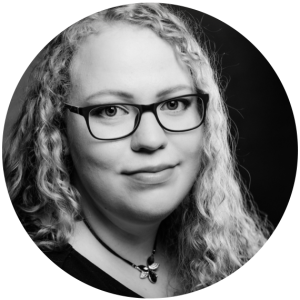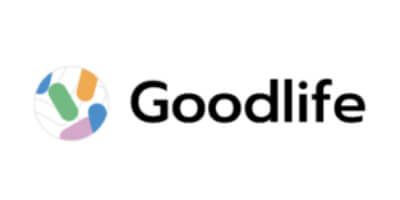Successful founding and financing through tailor-made business plan with financial model
Have a business plan drawn up – more planning, more financing, more control
Handwritten texts by professionals – without AI and templates
Strategic evaluation of your business idea as well as implementation and management consulting including
Dynamic financial model including KPIs to monitor successful implementation
Less than 4 hours of your time, delivered in 14 days
1.5 million € financing for dental center in Berlin-Wannsee
€1 million in financing for international food start-up
More than 300,000 € financing and support for international system catering chain
More than 500 entrepreneurs, founders, doctors and
Managing Director trust in our competence
 Can Altintas2024-07-24Ich lernte Herrn Kleinau während unserer Studienzeit kennen. Schon dort war ich beeindruckt von seiner Fähigkeit, so effizient und genau wie möglich zu arbeiten. Als ich nach langer Zeit verstand, dass er Businesspläne schreibt, bat ich ihn, mir bei der Erstellung eines Businessplans zu helfen. Meine Erwartungen wurden bestätigt: Ich erhielt sehr schnell ein qualitativ hochwertiges Produkt.
Can Altintas2024-07-24Ich lernte Herrn Kleinau während unserer Studienzeit kennen. Schon dort war ich beeindruckt von seiner Fähigkeit, so effizient und genau wie möglich zu arbeiten. Als ich nach langer Zeit verstand, dass er Businesspläne schreibt, bat ich ihn, mir bei der Erstellung eines Businessplans zu helfen. Meine Erwartungen wurden bestätigt: Ich erhielt sehr schnell ein qualitativ hochwertiges Produkt. Luciano Arslan2024-07-02Ich brauchte für die Eröffnung eines Cafés einen Finanzierungsplan für meine Bank. Bei meiner Recherche bin ich durch Zufall auf Florian gestoßen und muss sagen, dass ich sehr beeindruckt war. Am Anfang war ich mir gar nicht so sehr bewusst, wie unspezifisch meine Vorstellungen für die Finanzierung waren und wie wenig Ahnung ich doch hatte. Aber Flo und sein Team nehmen einen da richtig an die Hand. Sie nehmen sich viel Zeit für einen und versuchen richtig detailliert herauszuarbeiten, was die eigenen Vorstellungen sind, welche Mittel man zur Verfügung hat und erarbeiten so einen detaillierten Plan, der natürlich für die Bank wichtig ist, aber auch mir extrem für meine finanzielle Planung geholfen hat. Ich hatte auch das Gefühl, dass er gerade heraus kommuniziert, wenn meine Vorstellungen unrealistisch sind. Die Bank hat meine Finanzierung anschließend ohne viel Hin und Her genehmigt. Ich bin wirklich rundum zufrieden und kann nur sagen, dass man sich gut aufgehoben fühlt. Vielen Dank!
Luciano Arslan2024-07-02Ich brauchte für die Eröffnung eines Cafés einen Finanzierungsplan für meine Bank. Bei meiner Recherche bin ich durch Zufall auf Florian gestoßen und muss sagen, dass ich sehr beeindruckt war. Am Anfang war ich mir gar nicht so sehr bewusst, wie unspezifisch meine Vorstellungen für die Finanzierung waren und wie wenig Ahnung ich doch hatte. Aber Flo und sein Team nehmen einen da richtig an die Hand. Sie nehmen sich viel Zeit für einen und versuchen richtig detailliert herauszuarbeiten, was die eigenen Vorstellungen sind, welche Mittel man zur Verfügung hat und erarbeiten so einen detaillierten Plan, der natürlich für die Bank wichtig ist, aber auch mir extrem für meine finanzielle Planung geholfen hat. Ich hatte auch das Gefühl, dass er gerade heraus kommuniziert, wenn meine Vorstellungen unrealistisch sind. Die Bank hat meine Finanzierung anschließend ohne viel Hin und Her genehmigt. Ich bin wirklich rundum zufrieden und kann nur sagen, dass man sich gut aufgehoben fühlt. Vielen Dank! Dorian D.2024-07-02Es war sehr angenehm mit Florian zu kommunizieren und mir wurde schnell und effizient geholfen. Würde ich auf jeden Fall weiterempfehlen wenn jemand auch einen Businessplan braucht. Speziell für Arztpraxen!
Dorian D.2024-07-02Es war sehr angenehm mit Florian zu kommunizieren und mir wurde schnell und effizient geholfen. Würde ich auf jeden Fall weiterempfehlen wenn jemand auch einen Businessplan braucht. Speziell für Arztpraxen! Fenja Land2024-06-30Ich habe einen top Businessplan für das Vorhaben meiner Zahnarztpraxis erhalten . Strukturiertes Vorgehen , unkomplizierte Rückfragen und kurzfristige Fertigstellung. Sehr zu empfehlen.
Fenja Land2024-06-30Ich habe einen top Businessplan für das Vorhaben meiner Zahnarztpraxis erhalten . Strukturiertes Vorgehen , unkomplizierte Rückfragen und kurzfristige Fertigstellung. Sehr zu empfehlen. Sarah Sheedy2024-06-26Für die Gründung meiner Arztpraxis brauchte ich einen Kredit iHv knapp 1m€. Florian und das Team von Squared Away haben mir den dafür nötigen Businessplan in 10 Tagen in super Qualität geschrieben. Die Bank hat die Finanzierung ohne weitere Rückfragen bewilligt. Insbesondere das Finanzmodell ist hervorzuheben. Dieses nutze ich nun auch in der operativen Steuerung meines Geschäftes, um zu schauen, ob ich meine Ziele erreiche. Vielen dank a das gesamte Team!
Sarah Sheedy2024-06-26Für die Gründung meiner Arztpraxis brauchte ich einen Kredit iHv knapp 1m€. Florian und das Team von Squared Away haben mir den dafür nötigen Businessplan in 10 Tagen in super Qualität geschrieben. Die Bank hat die Finanzierung ohne weitere Rückfragen bewilligt. Insbesondere das Finanzmodell ist hervorzuheben. Dieses nutze ich nun auch in der operativen Steuerung meines Geschäftes, um zu schauen, ob ich meine Ziele erreiche. Vielen dank a das gesamte Team!
Our customers achieve high financing
and sustainable success
Business plans & financial models created
Managed capital requirements
Time investment for you
Average completion time
How to develop your business idea with strategic business planning from 0 to 100 bring
You know that your idea will be successful but you lack a strategic plan and the necessary financing

Fact 1
To implement your idea, you need a clear, measurable strategic plan that overlays perspectives and concrete steps. This takes time and expertise.

Fact 2
Every founder wants to earn millions. A hard-coded 'financial plan' is therefore of no use to you. You need a financial model that helps you implement your plan in a realistic and well-founded way and at the same time convinces investors.

Fact 3
Banks and investors will only give you money if they understand your idea and trust you to implement it. That's why your strategic plan and your financial plan must fit together in a coherent story.
Your business plan only leads you to successful financing and implementation, if …
… he clearly communicates a clear vision based on sound data...

… it contains a bottom-up financial model that underpins your vision and serves as a control instrument...

… it will serve as a realistic strategic basis for your company after successful financing...

That is why our Customers so successful
Convince banks, investors and business partners and lead your business venture to sustainable success
Text quality

Other agencies
Uninspired text blocks like “we are founding a company because we want to solve problem XYZ…” – sounds like AI or is from AI…
Squared Away
Handwritten storyline, individually designed and written. No phrases, just a compelling, clear and coherent story.
Financial planning

Other agencies
Desired numbers that are entered in hard-coded form. Often not even in Excel but in a Word table. No dynamism and no coherent, convincing story (not to mention KPIs for implementation).
Squared Away
Bottom-up financial model based on understandable and adaptable assumptions that dynamically control the entire model. Always including operational KPIs for implementation so that you know exactly what you need for the success of your idea.
Strategy consulting

Other agencies
A document that is only written to be handed in and then thrown away. No strategic implications for you and your business.
Squared Away
A document that serves as the basis for the operational implementation of your idea. In addition, we advise you from start to finish so that your business plan not only secures successful financing, but also accompanies you in the long term during implementation.
In three questions about Fixed price
Answer three short questions. At the end you will receive direct access to our offer with your guaranteed fixed price.
Have a business plan drawn up:
This is what the process looks like
Your time investment: Less than 4 hours!

Erstgespräch und Angebot
After we have evaluated in a free analysis meeting whether we can achieve your goals together, you will receive a binding offer, which you then confirm.

Kick-off Gespräch
In about an hour we will discuss everything we need to know about your idea. Beforehand we will look through all existing documents (e.g. pitch deck, website, etc.). We will also delve a little into the strategic direction of your idea.

Entwurf, Feedback & Iteration
You will receive your first draft within 7 days (express options available up to 48 hours). We will iterate the draft until you are 100% satisfied. Typically, the final version takes less than 5 days.

Finalisierung & strategische Planung
We finalize your documents and adapt the design to your project. In a final discussion, we clarify all your questions and discuss the use of your documents as a basis for implementing your idea and the presentation of the documents in fundraising.
Our Squared Away Team
for your success
Dr. Florian Kleinau
Florian, our founder and strategy expert, studied neuroscience, psychology and philosophy and has more than 10 years of experience in med-tech start-ups, venture capital and strategy consulting. He has helped build companies in China, Europe and the USA, accompanied numerous M&A transactions and successfully supported countless start-up projects.

Natalie Seyrich
Natalie is our design expert. She studied design with a focus on product and communication in Dresden and Vienna. After half a decade in China and Bulgaria, she worked as a designer in various companies for over five years.


Lars Kessler
Lars studied philosophy and psychology in the Netherlands and Ireland. He has over five years of experience in fundraising and marketing with a focus on start-ups. His particular focus is on employer branding and (psychological) strategy development from management, as well as communication and language.
Frequently Asked Questions
Every business plan includes a financial section. In this financial section, the assumptions that you make in the strategic - i.e. written - part of your business plan are backed up with figures. This serves to show readers that your assumptions also make sense in implementation, i.e. that they are realistic and feasible.
At the same time, the financial section - if it is done well - is the basis of your operational management. Here you can see what goals you have set for yourself and what adjustments you need to make to achieve them. Ideally, your financial section is your cheat sheet for everyday business.
For this to happen, you need a financial section that takes your strategic ideas and processes them realistically. This processing must be dynamic, which means you must be able to adjust figures and thereby influence other figures. At the same time, these figures must be detailed enough to have a real operational impact. Simply establishing a relationship between sales and profits is of no use operationally. You must understand what drives your sales, what influences your costs and how these two figures are related.
For example, a manufacturing company needs to know how many resources are needed per unit produced, when new resources (e.g. employees) need to be hired and how this all affects sales and cost forecasts. This is the only way to effectively manage order volumes and employee planning.
With us you get exactly that – tailored to your individual business.
First, your business plan is always your north star. It shows you where the company should develop. Here you can strategically reflect on what you are planning, which projects are relevant to you and how you want to position yourself in the coming months and years. The financial model serves as an operational control basis on which you can make decisions about investments, employee planning, goals and other project-based topics. The KPIs included in the financial model give you clear control elements that enable you to develop along your planned path. Even though you probably already have an idea of how your company is positioned financially, a financial model helps you to represent and vary future developments based on clearly defined assumptions. This way you can see what influence certain changes in your operational business will have on your results.
Secondly, you often need external investors to finance growth, projects or company takeovers. In this case, you definitely need a business plan and a financial model, because external investors (banks) in particular, but also equity investors (investors) or funding institutions always want to see a business plan with a financial model.
Third, a financial model will help you if your company needs to reorient itself, for example if sales are falling or costs are rising. This is where the first and second reasons come together. On the one hand, you need to develop a deep understanding of your business and, on the other hand, you may need to convince external investors to provide you with additional funds.
First, we love writing and designing, and we bring that passion to every single plan.
Secondly, we have entrepreneurial roots and a solid academic education. This means we can empathise with you and your situation.
Thirdly, we deliver quickly and efficiently because we do not have long bureaucratic processes and speed is one of our strengths.
Fourth: We work with you personally - this means that you communicate directly with us about your plan and your ideas, in as much detail as necessary to ensure that everything you want in your plan is implemented. The integration of your ideas is of course included.
Finally, we always include the strategic consideration of your idea. It is important to us that the business plan is not just a document that you hand in and forget, but that you use it for the daily planning of your business. It should simultaneously become your strategic north star and, through the financial plan, your daily control instrument. We will teach you this in our discussions and ensure that the documents are written in such a way that they achieve exactly that."
You always need a business plan when you want to plan and manage a complex business idea. This is the case, for example, when founding, expanding or taking over a company. Certain projects within existing companies also require detailed planning. The business plan brings together strategic considerations and financial planning and, on the one hand, results in a strategic north star (a "target image") including a description of how this is to be achieved, and, on the other hand, a control tool for day-to-day business (the financial model with KPIs).
In many cases, a business plan is used for three main purposes:
First: As a strategic management tool. In this function, the business plan primarily serves the founders or the management team as a guide on how a specific business idea can be turned into reality.
Second, to present the idea to external partners, especially those who wish to provide financing.
Third: To present the business idea to potential business partners or new employees. The areas of application of the business plan are diverse and can be found wherever an abstract idea needs to be worked out in concrete terms in its planned implementation.
The business plan is a written document that usually consists of two main parts: the strategic part and the financial part. The purpose of business planning is to present the goals of a company and to argue how these goals are to be achieved. Typically, the goals are mapped out using so-called key performance indicators (KPIs), which usually arise from the financial part. An example of this could be setting a specific sales target within a set time. The strategic part of the business plan then explains how these numerical goals are to be achieved. This is particularly about presenting the product to be sold or the service to be provided and the framework for this - for example, employee planning, supplier and customer groups, market access and so on. It is important that the business plan should represent medium-term planning, which means that it does not only refer to the next six months, but usually to the next three to five years of company development. The business plan therefore represents the planning of the implementation of an entrepreneurial idea in a structured form.
For investors and banks, the assumptions behind the planning are crucial - not just the numbers that end up in the financial reports. This basis must be solid, easily defendable and, above all, coherent. Based on your financial planning, we can either create an assumption-based plan or, if you already have one, carry out an audit to validate the integrity of the model. In most cases, we fundamentally revise existing financial plans because we determine together with our clients that they do not meet the banks' requirements. Our goal is always that your financial plan can also be used strategically. That's why we take a close look at your existing documents and discuss them with you in detail.
We work with fixed prices because predictability is the be-all and end-all for entrepreneurs. At the top of our website you will find a form that you can fill out. At the end of the form you will see the fixed price for a business plan, including financial model and strategic advice.
What we can already reveal here: It is cheaper than you think, worth every cent and is supported by the BAFA with up to 80% subsidies!
Of course, the time it takes to create the documents depends somewhat on your own time availability. After our kick-off meeting, we usually need around seven days to present you with a first draft. In most cases, this is already very close to the final version. You can then send us your further suggestions for changes, which we will implement immediately. Typically, we reach the final version after another five days. This is then revised again in terms of design, and after another 48 hours you receive the final business plan or the final financial model. The entire process usually takes no longer than 14 days; we are often finished much faster. We also offer express options where we can deliver a first draft within 48 hours.
A financial model gives you a comprehensive insight into the fundamental aspects of your business's financial performance and its future development. By analyzing sales forecasts, cost structures, investments and other financial metrics, it enables you to make informed decisions. In short: It shows you what you need to do to achieve certain goals. For example, how many units you need to sell to achieve a certain revenue or EBITDA. In this way, the financial model serves as a valuable tool for planning, controlling and optimizing your business.
A financial model consists of two essential components: input and output.
The input includes data about your operational business and maps it - from the customer funnel to production to aftersales and customer service - in as much detail as necessary and at the same time as concisely as possible. We take into account all relevant details that influence your sales and costs in order to realistically model your business.
The output consists, on the one hand, of the three traditional financial statements (profit and loss statement, balance sheet, cash flow) and, on the other hand, of output KPIs (key performance indicators) and visualizations. These output KPIs provide a clear overview of the financial health of your company and enable you to monitor and analyze important metrics in order to make informed business decisions.
You should always work with a financial model when planning a complex project that has financial components or consequences.
At its core, a financial model serves two main functions: operational and use for financing or capital raising. While financial models are most often required in financing requests, it is important to recognize that they are extremely useful at an operational level as well.
When it comes to financing, the investor or bank wants to see how your business will develop in the future and what assumptions are underlying these forecasts. What is less well known, however, is that you should also use your financial model operationally to set goals and monitor your performance.
Every financial model contains key performance indicators (KPIs) in the output that you can use for this purpose - a simple example would be sales. This way you can measure whether you and your business are on track or what you need to do to stay on track. Your financial model therefore acts as a control tool that helps you to direct and optimize the success of your company.
Traditionally, a financial model aims to show the development of the three financial statements (profit and loss statement, balance sheet, cash flow) over time. Financial models can vary greatly in terms of the level of detail. The simpler models assume a percentage growth of the various figures in these statements, while the more detailed models take every single operational assumption into account. The reality is probably somewhere in the middle and must be determined on a case-by-case basis. The decision as to whether a monthly or annual presentation makes more sense must also be made individually.
In addition to the classic 3-statement financial model, many other aspects can also be modeled - for example, individual projects or scenarios. It is also possible to create detailed views of cash flow, which is often helpful for operational control.
Every financial model and business plan we create is unique - just like every company we support. Our process begins with a joint analysis of the specific assumptions that form the basis of your business, the so-called model drivers. Building on this, we look at the relationship between these different factors and their impact on the three financial statements (profit and loss statement, balance sheet, cash flow). We also identify relevant output measures (KPIs) and consider how we can present them in a graphically appealing way.
In the business plan, we then show strategically and operationally how you want to achieve your financial goals. This includes not only your product, but also your entire strategic direction and planning. Finally, we design all documents in your unique design - with or without specifications from you.
No problem - that's what we're here for. Either you already know what you want to achieve (for example: "I want to earn €5,000 a month"), or we work together to calculate what you should achieve. We work out the input for both scenarios in joint discussions, which are included in all of our packages.
The length of the business plan is less important than its content. It is important that both the strategic and financial sections adequately and in a way that builds on one another, explain how the business is to be implemented. When writing a business plan, you should always keep in mind that someone who has never had contact with the company or the idea must ultimately understand what it is about and how it is to be implemented in concrete terms. A business plan, including the financial section and the corresponding design elements, usually comprises 50 to 100 A4 pages.
If you need your business plan or financial model particularly quickly, we offer various express options that enable delivery within up to 48 hours. Just talk to us - we will certainly find a solution!
Our goal is to take as much work off your hands as possible.
Our kick-off lasts about an hour, during which you can tell us all the important information about your planned company. Don't worry, we'll ask you the right questions to find out what we need to know. Before or after, you can send us all the relevant documents you already have - be it notes, drafts for financial planning, BWAs, pitch decks, requirements from your investors, initial operational results or objectives. If you already have finished documents, all the better! In this conversation, we will give you initial strategic assessments of your business.
After the kick-off, we may get back to you by email with questions. As soon as the first draft is ready, you should read it and give us your feedback. This will usually take up to an hour of your time. If you have any questions, we can arrange another phone call or you can send us your questions and comments by email.
We then implement your business plan and your financial model in a creative way. This means that we integrate your corporate design or your design ideas. Each design is implemented by a professional designer. You are also welcome to give us feedback here, which we will implement.
Finally, you will have a one-hour strategy meeting with one of our team members. Here we will discuss your business plan and financial model in detail, answer your questions and determine the operational implementation of your idea.
Normally, you will have invested no more than four hours until you have your final product.
Tell us about your project
Do you need a business plan to ensure the success of your business idea, to win partners and to convince investors? Then write to us!
An analysis discussion with us is of course non-binding and free of charge.
Due to the current high demand, we can only respond to requests that include a meaningful description of the company.

Dr. Florian Kleinau
Agency Management &
Business plan expert


















